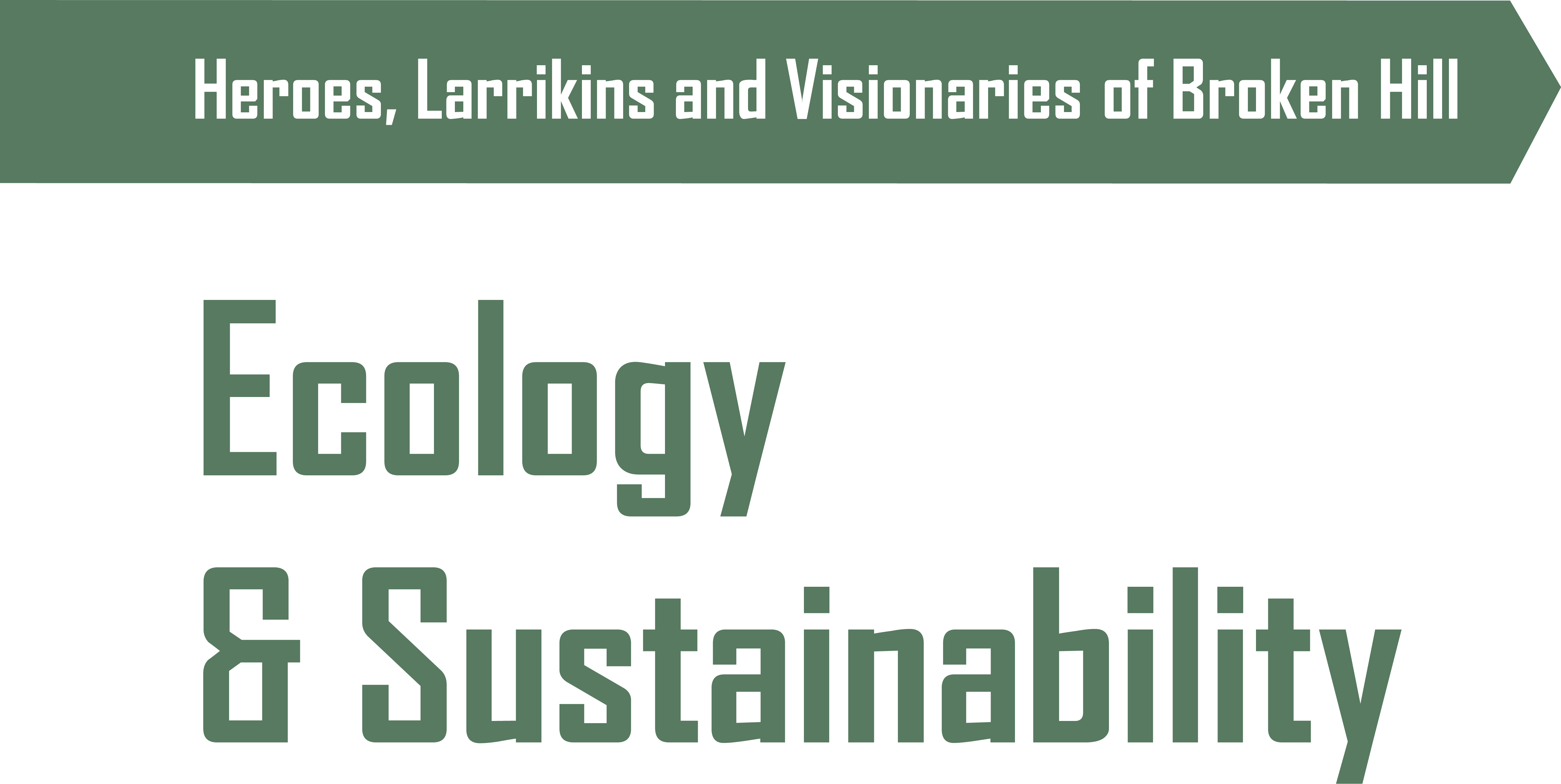Ecology & Sustainability

Up until the 1860s, the landscape of Broken Hill was desert grassland with outcrops of shrubs and the hardy native ground cover, Old Man Saltbush. There were copses of White Pine and Mulga and Red River Gum. This was the habitat of desert rodents, possums, flying foxes and the magnificent wedge-tailed eagle. For tens of thousands of years, the grasslands and wildlife of Far West NSW had thrived under the stewardship of the Traditional Owners, the Wilyakali people.
The first changes came with pastoralism. Mt Gipps Station was established in 1866 and gradually spread across 2185 square kilometres, grazing 71,000 sheep. The sheep ate the saltbush and the wedge-tails occasionally ate a sheep, which led to the eagles being poisoned by station hands. By 1900, the natural ecosystem of the desert plains was under strain from grazing and the introduction of non-native foxes and rabbits.
By the 1920s, the damage to the delicate ecology of the region by decades of grazing and mining was complete. The timber-getting required by mining operations had cleared every tree in a 30-kilometre radius around Broken Hill. The bees, butterflies, possums, birds and flying foxes had now also lost their habitats.
Towering dust storms billowed in from the desert, darkening the skies and settling dirt and sand over verandahs, fences and gardens. It crept into homes and shops and coated furniture and clothing. The worst storms left behind metres of high banks of sand.
Doctor William MacGillivray, a Broken Hill medical practitioner, was the first to be disturbed by the disappearance of native flora and by soil erosion. He started recording his observations in 1903 and began campaigning for areas to be fenced-off from livestock to allow for regeneration.
Along with Broken Hill’s self-taught botanists, Albert and Margaret Morris, MacGillivray established the Barrier Field Naturalist Club in 1920. The Morris’ undertook field trips, collected seeds from native flora and built their own herbarium. Through trials and study and a passion for ecology, the Morris’ and MacGillivray became experts on how to restabilise the soil, eliminate dust storms, and restore habitats for indigenous species. In the mid-1930s, they petitioned the Zinc Corporation to support a regeneration zone around the city. Trees and shrubs and desert flowers would be planted to restore native flora and fauna and, at the same time, protect Broken Hill from dust storms.
The regeneration scheme was fully supported by A.J. Keast, president of the Zinc Corporation. Keast was as energetic and passionate about planting trees and restoring desert flora as he was about mining and engineering.
Now visitors can learn more about the trees and shrubs which are native to Broken Hill at Riddiford Arboretum, established in 1988 to pay tribute to Albert and Margaret Morris, and to celebrate and protect the intricate balance of the desert ecosystem.
Audio transcript available.
PICK UP YOUR FREE BROCHURE & MAP OF THIS TRAIL FROM THE VISITOR INFORMATION CENTRE